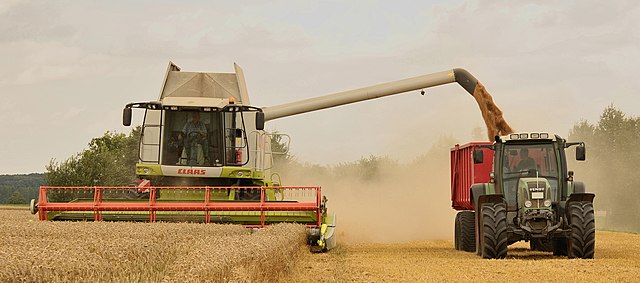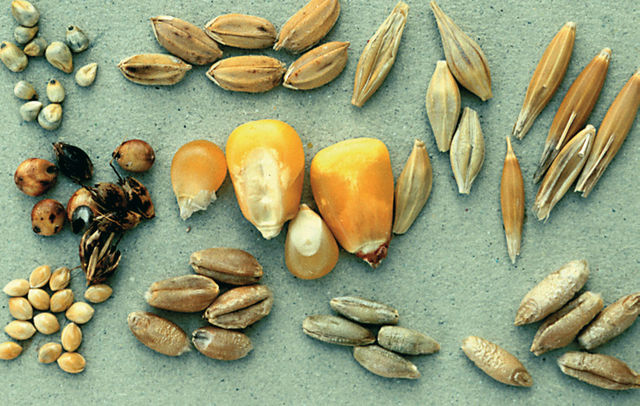Harvesting is the process of collecting plants, animals, or fish as food, especially the process of gathering mature crops, and "the harvest" also refers to the collected crops. Reaping is the cutting of grain or pulses for harvest, typically using a scythe, sickle, or reaper. On smaller farms with minimal mechanization, harvesting is the most labor-intensive activity of the growing season. On large mechanized farms, harvesting uses farm machinery, such as the combine harvester. Automation has increased the efficiency of both the seeding and harvesting processes. Specialized harvesting equipment, using conveyor belts for gentle gripping and mass transport, replaces the manual task of removing each seedling by hand. The term "harvesting" in general usage may include immediate postharvest handling, including cleaning, sorting, packing, and cooling.
Harvesting in Volgograd Oblast, Russia
Straw of hay in a field of Schleswig-Holstein, Germany.
Some people use their own animals for harvesting their crops
Harvesting maize field in Rantasalmi, South Savonia, Finland
A grain is a small, hard, dry fruit (caryopsis) – with or without an attached hull layer – harvested for human or animal consumption. A grain crop is a grain-producing plant. The two main types of commercial grain crops are cereals and legumes.
Various food grains at a market in India.
Harvesting a cereal with a combine harvester accompanied by a tractor and trailer.
Cereal grains: (top) pearl millet, rice, barley (middle) sorghum, maize, oats (bottom) millet, wheat, rye, triticale
Cereal grain seeds clockwise from top-left: wheat, spelt, oat, barley.








